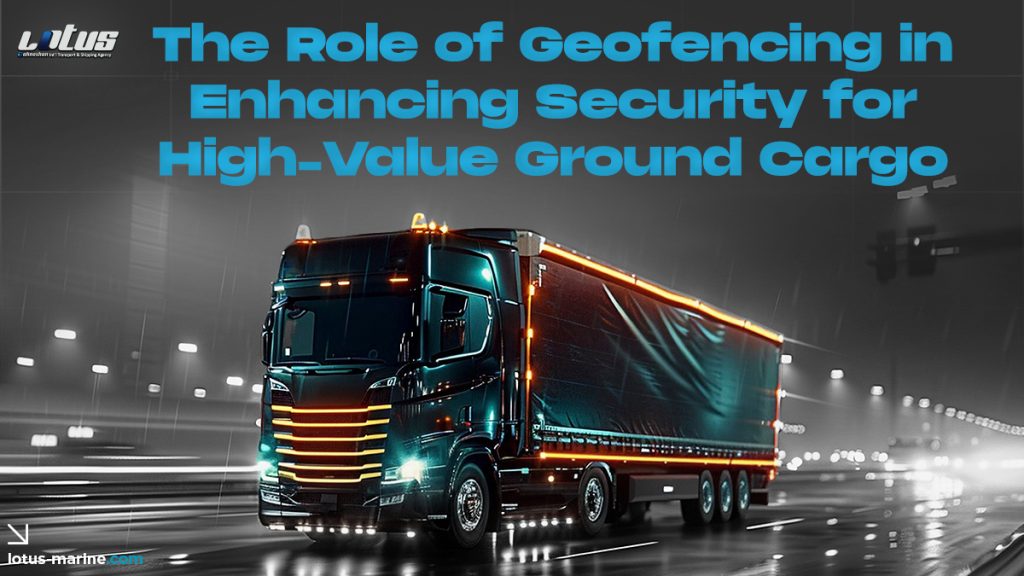Introduction
Transporting high-value cargo has always been a logistical challenge, fraught with risks of theft, hijacking, and tampering. Traditional security measures like locked containers and driver protocols, while effective to some degree, often fall short in addressing modern threats. Enter geofencing, a technology-driven solution that is transforming the way high-value ground cargo is secured. By creating virtual boundaries and integrating real-time monitoring, geofencing provides a robust framework for enhancing cargo security and ensuring supply chain efficiency.
What is Geofencing?
At its core, geofencing is a location-based technology that uses GPS, RFID, and software systems to create virtual perimeters around specific geographic areas. These boundaries can be set up to encompass safe routes, delivery locations, or restricted zones. When a vehicle or shipment enters or exits these predefined areas, alerts are triggered, allowing operators to respond instantly.
Types of Geofencing Systems:
- Static Geofencing: Boundaries that remain fixed, such as warehouse locations or approved routes.
- Dynamic Geofencing: Adjustable boundaries based on real-time conditions, such as traffic or weather updates.
Why High-Value Cargo Needs Geofencing
Transporting high-value goods like electronics, pharmaceuticals, or luxury items presents unique risks:
- Theft and hijacking: High-value shipments are lucrative targets for criminals.
- Tampering: Sensitive cargo can be damaged or altered, leading to significant losses.
- Unauthorized deviations: Non-compliance with predefined routes can jeopardize cargo integrity.
Geofencing bridges these gaps by providing real-time tracking, instant alerts, and actionable insights to mitigate risks.
How Geofencing Enhances Security
- Real-Time Location Tracking Geofencing allows operators to monitor the exact location of shipments at all times. Alerts are triggered for route deviations or delays, ensuring timely intervention.
- Restricted Zones and Alerts By defining no-go zones, such as high-crime areas, operators can keep shipments safe. Alerts are instantly generated if a vehicle crosses into restricted areas.
- Driver Accountability Geofencing technology enforces adherence to pre-approved routes, ensuring drivers comply with safety protocols. Deviations are flagged immediately for investigation.
- Integration with Other Technologies Geofencing works seamlessly with telematics, IoT sensors, and AI systems. For example, integrating geofencing with temperature sensors ensures the safety of perishable or sensitive goods.
Advantages of Using Geofencing for High-Value Cargo
- Enhanced Security: Prevents theft, tampering, and unauthorized access.
- Improved Compliance: Ensures adherence to regulatory requirements.
- Reduced Costs: Minimizes losses and lowers insurance premiums.
- Operational Efficiency: Optimizes routes and delivery times for better customer satisfaction.
Case Studies
- Electronics Industry
A geofencing-enabled system helped prevent a $1 million theft when unauthorized route deviations triggered alerts, allowing swift action. - Pharmaceutical Shipments
By integrating geofencing with temperature monitoring, a pharmaceutical company ensured that vaccines were transported under optimal conditions. - Luxury Goods
Real-time alerts for boundary breaches helped a logistics company recover stolen luxury watches worth over $500,000.
Implementing Geofencing for Your Fleet
- Choosing the Right Platform Look for features such as customizable boundaries, integration with IoT, and compatibility with existing systems.
- Training and Awareness Drivers and operators need comprehensive training to maximize the potential of geofencing systems.
- Cost Implications While initial costs may be significant, long-term benefits in terms of reduced losses and increased efficiency make geofencing a worthwhile investment.
Challenges and Limitations
- Connectivity Issues: Geofencing relies on stable GPS and internet signals, which can be disrupted in remote areas.
- False Alerts: Inaccurate triggers due to technical glitches may require manual oversight.
- Privacy Concerns: Drivers may perceive geofencing as intrusive, requiring clear communication about its benefits.
The Future of Geofencing in Ground Cargo Security
The next generation of geofencing systems will leverage AI and machine learning to predict risks before they occur. With advancements in autonomous trucking and enhanced data analytics, geofencing is set to play a pivotal role in the future of secure logistics.
Conclusion
Geofencing is a game-changer for securing high-value ground cargo. By combining real-time tracking, restricted zones, and advanced integration capabilities, this technology addresses critical vulnerabilities in logistics. Companies that adopt geofencing are not just protecting their cargo—they’re investing in a smarter, more secure future.
FAQs
- What industries benefit most from geofencing?
Geofencing is particularly valuable in electronics, pharmaceuticals, and luxury goods transportation. - How does geofencing reduce theft?
By triggering alerts for unauthorized route deviations or entry into restricted zones, it enables immediate action. - Can geofencing work with existing systems?
Yes, geofencing integrates seamlessly with telematics, IoT sensors, and AI-based platforms. - Is geofencing cost-effective?
While initial costs are high, benefits like reduced losses, lower insurance premiums, and improved efficiency justify the investment. - What are the future trends in geofencing?
AI-driven geofencing, integration with autonomous vehicles, and predictive analytics are shaping the future of secure logistics.







